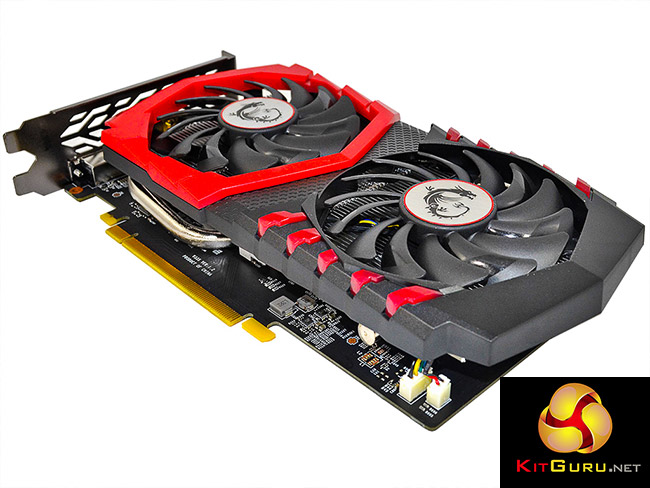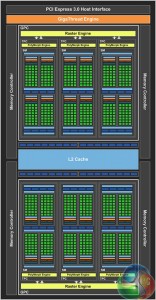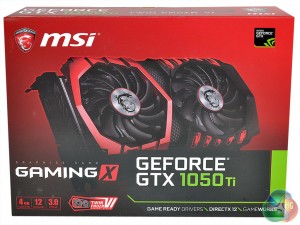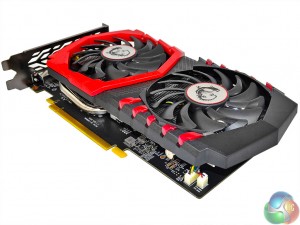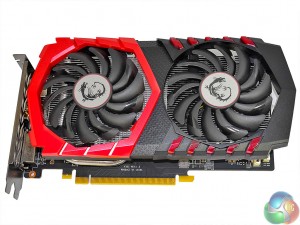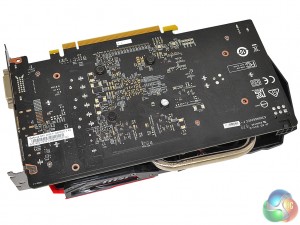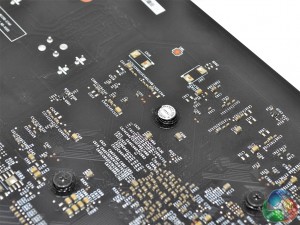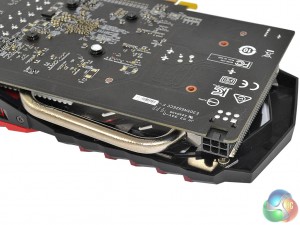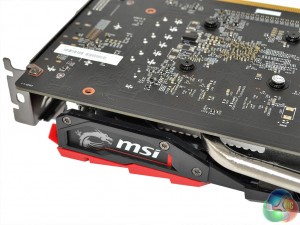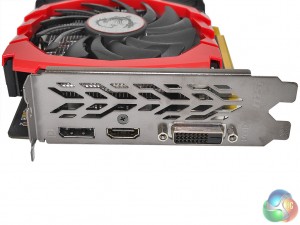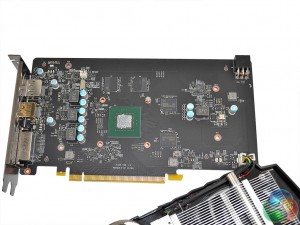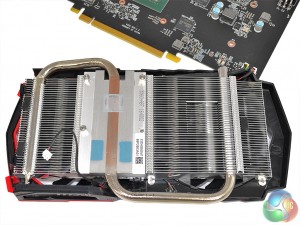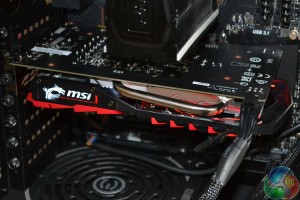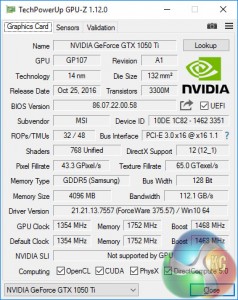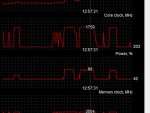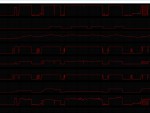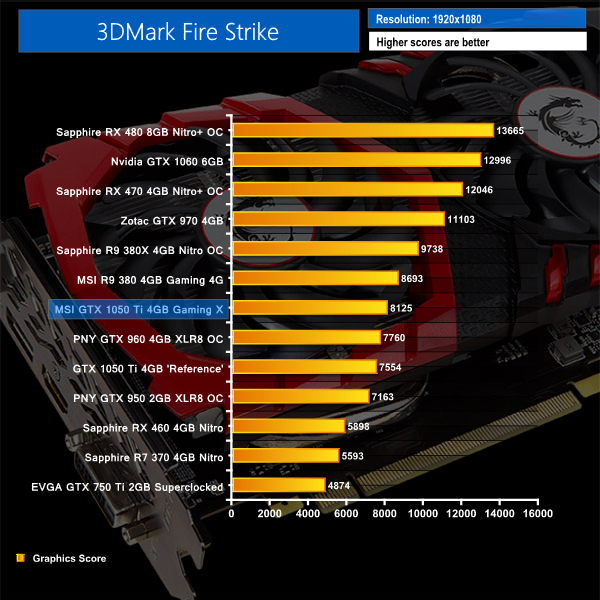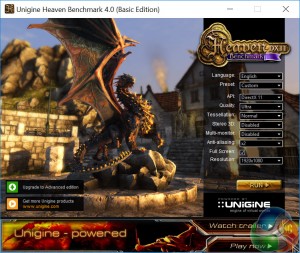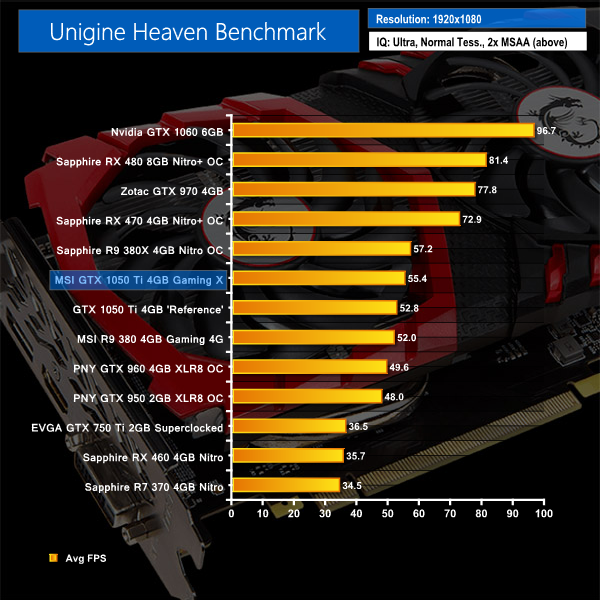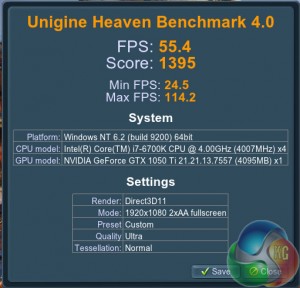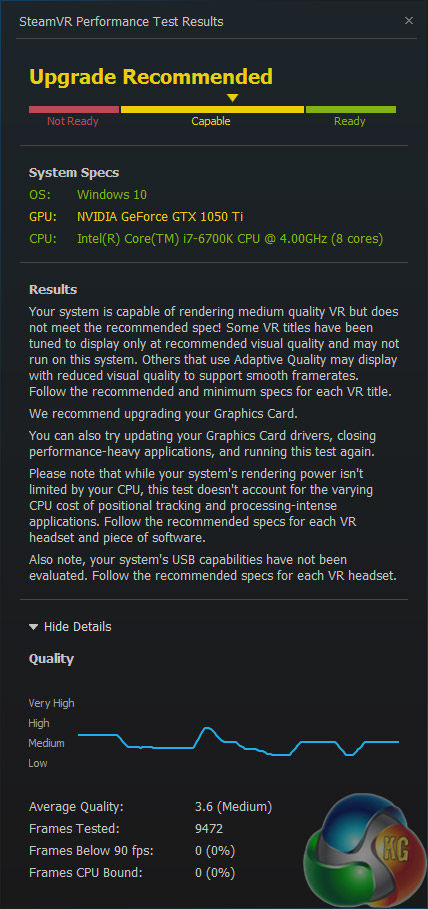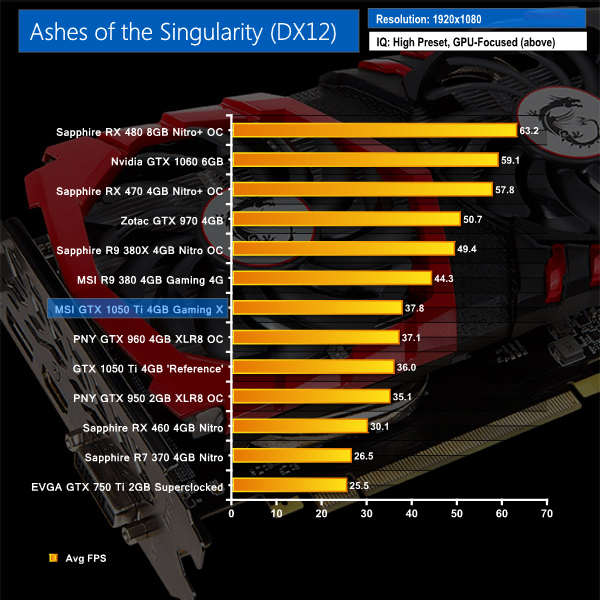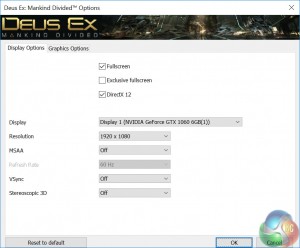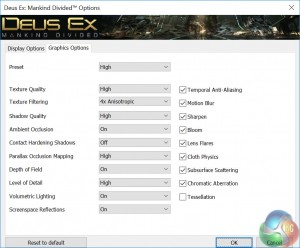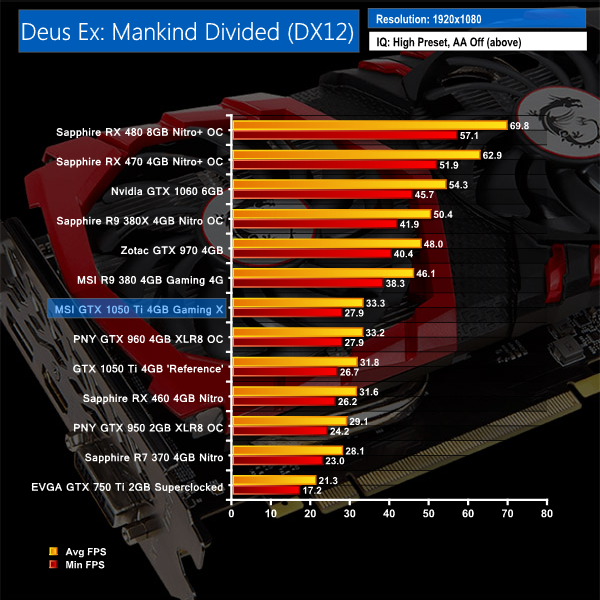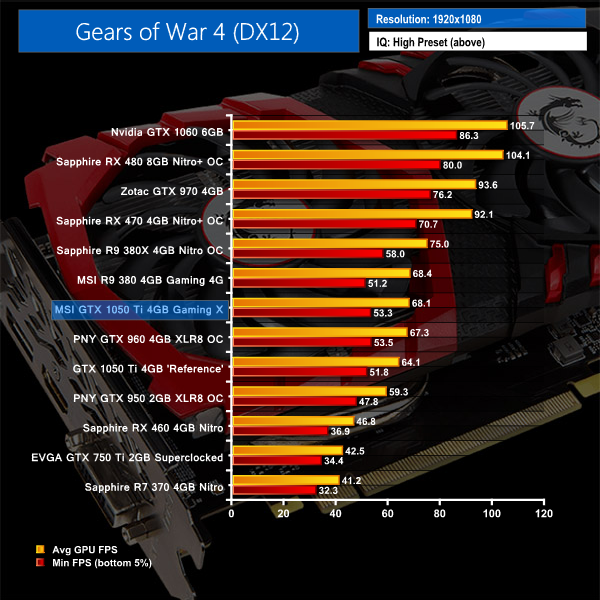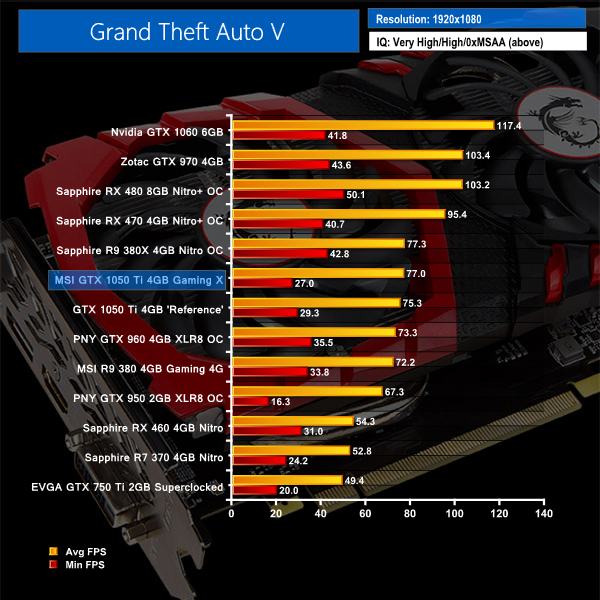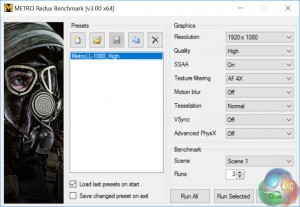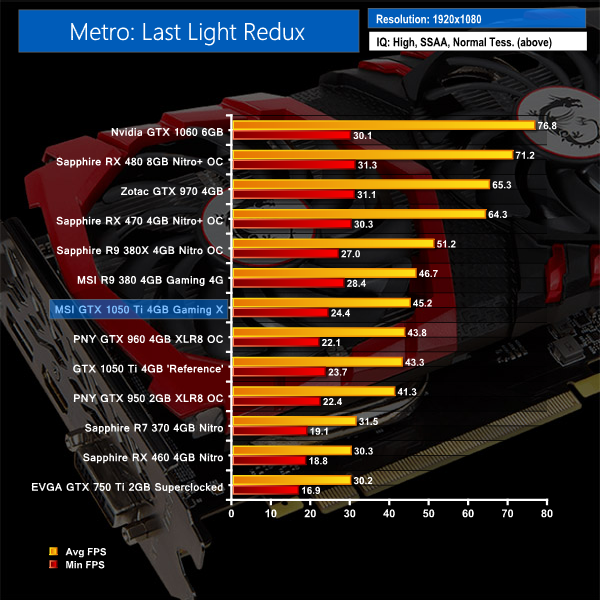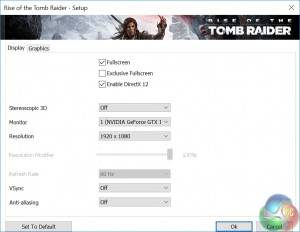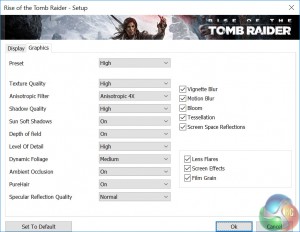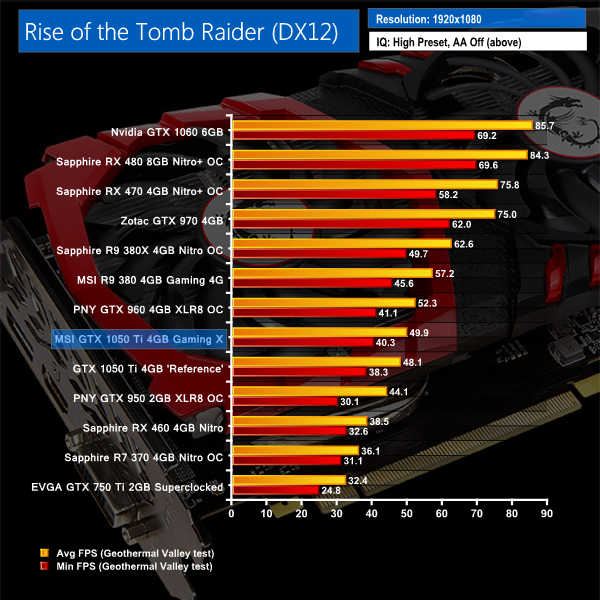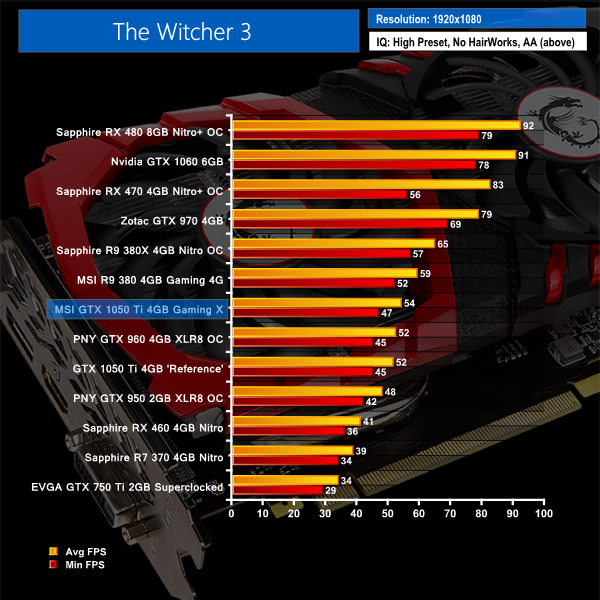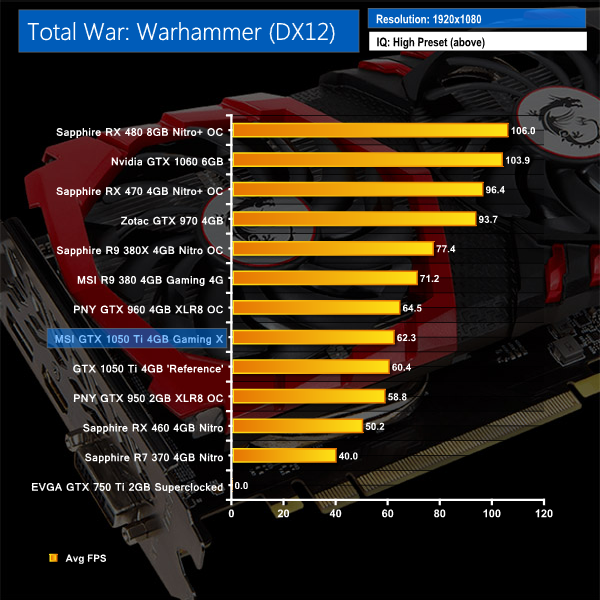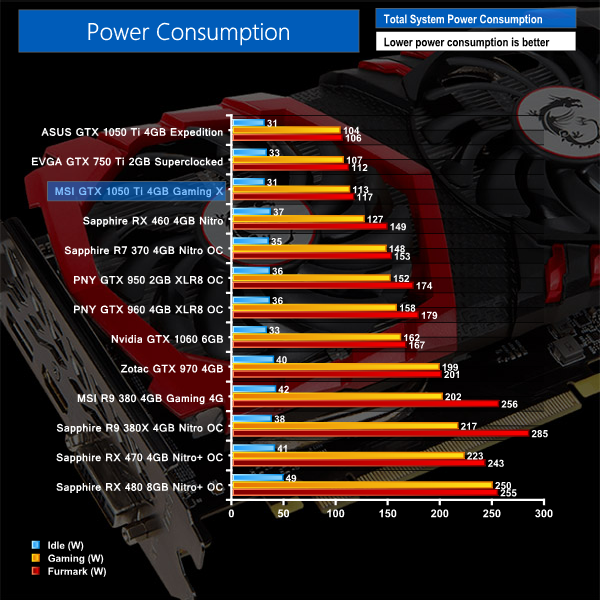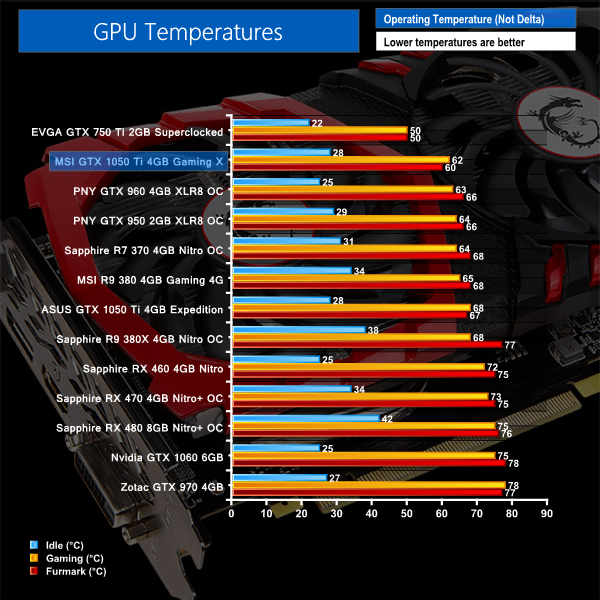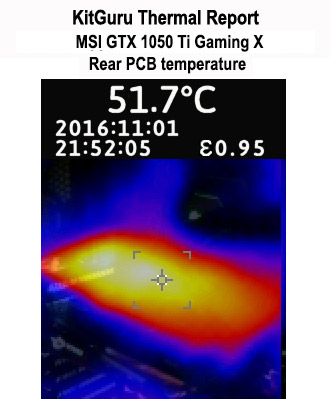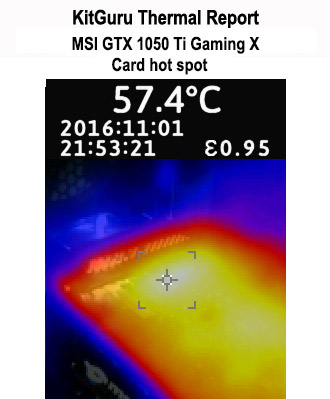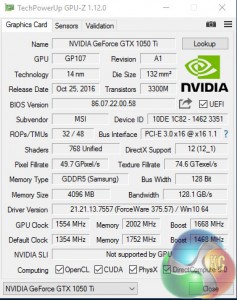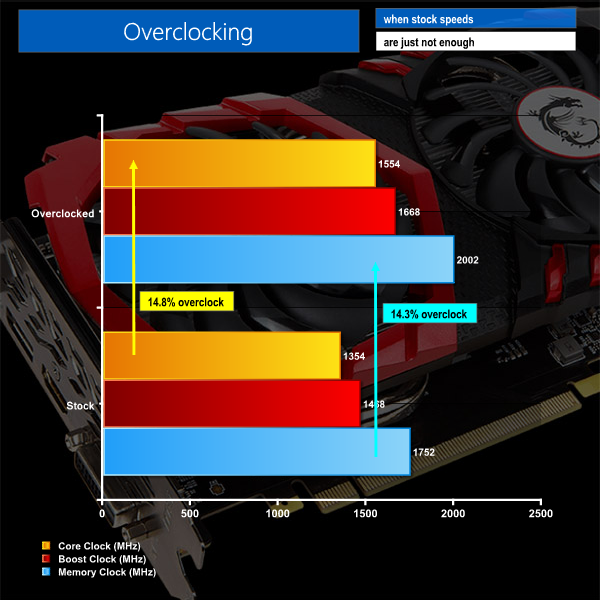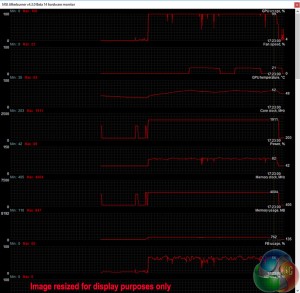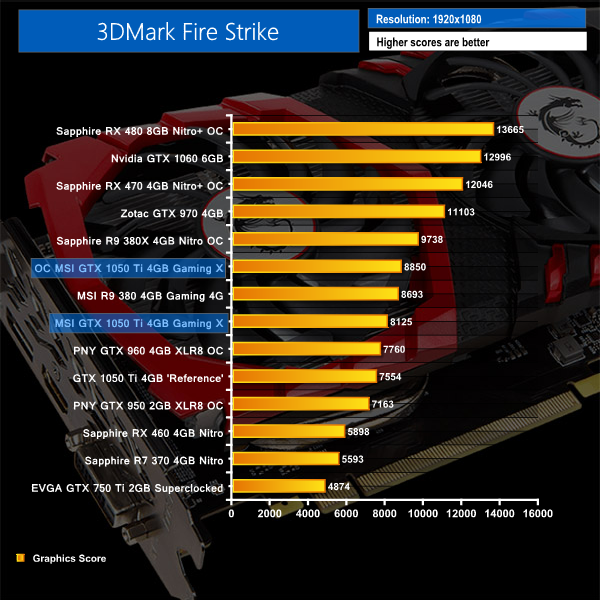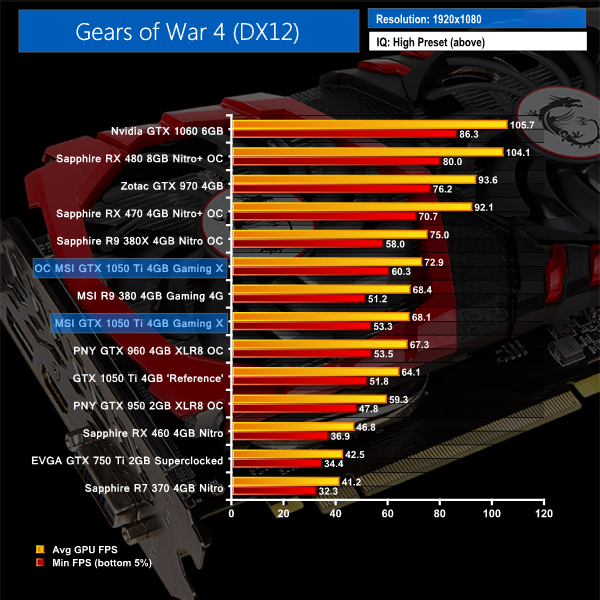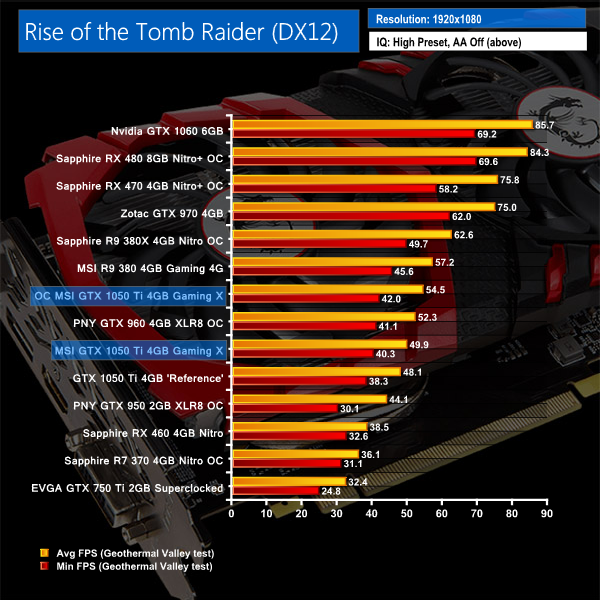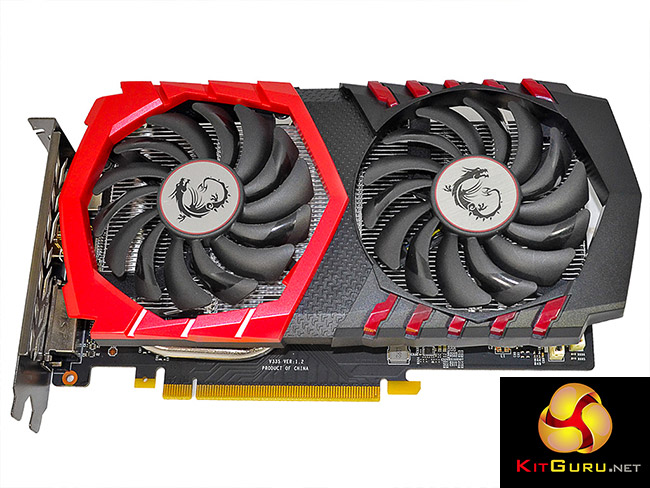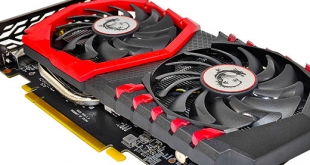
The GTX 1050 Ti represents Nvidia Pascal's foray into the lower-cost end of mainstream territory that is currently being fought competitively by AMD with the company's current-generation RX 460 and RX 470 Polaris GPUs. With a suggested retail price of £139, Nvidia has carved out a price point which sits the GTX 1050 Ti 4GB somewhat unopposed between the RX 460 and RX 470.
Targeting 1080p gamers, how will the GP107-powered GTX 1050 Ti based on Samsung's 14nm manufacturing process perform? In light of no Founder's Edition of reference board, we answer that question using MSI's factory-overclocked GTX 1050 Ti 4GB Gaming X graphics card.
According to the Steam Hardware survey, 1920×1080 is still, by far, the most popular resolution for PC gamers. So it makes perfect sense for GPU vendors to continually push graphics cards with the sole intention of offering competitive 1080p60 gaming performance. And that's exactly where Nvidia's GTX 1050 Ti comes into play.
AMD's mainstream-first launch approach to its current generation of GPUs has given the company a good position in the lower-cost ends of the mainstream market. The Polaris 11, 14nm RX 460 goes up against Nvidia hardware that is two generation older than Team Green's freshest architecture – the Gen 1 Maxwell-touting GTX 750 Ti.
Go a couple of tenners higher to around £140 and you're at a price point where last generation hardware from both teams is still king; GTX 950 for Nvidia and, roughly, R9 380 for AMD, if you can source an offering. Needless to say, this section of the mainstream market is overdue an update to its offerings.
The new GP107 GPU is built using Samsung's 14nm FinFET manufacturing process. This is different to the higher-end Pascal offerings which use the 16nm FinFET process from TSMC. Transistor count sits at 3.3 Billion. A pair of graphics processing clusters combine to give a total of 768 CUDA cores, 48 Texture Units, and 32 ROPs.
In its reference form, GTX 1050 Ti operates at a base clock of 1290MHz, with a boost frequency of 1392MHz. The four Gigabytes of GDDR5 memory are clocked at 1752MHz, or 7Gbps effective, and access a 128-bit bus. No 2GB or 8GB variants exist. And that's a good thing as 2GB would present an imbalance against the underlying GPU horsepower, while 8GB would be a waste. The higher-priced 3GB GTX 1060 is looking a little red-faced, at least when it comes to VRAM capacity.
Rated TDP of the GTX 1050 Ti is 75W, which is a notable 25% increase over the GTX 750 Ti that the GP107-powered card realistically replaces. But it's still lower than AMD's 120W RX 470. And that 75W figure is actually an important point. The 75W board power rating possibility means that GTX 1050 Ti cards can be designed without a power connector. This makes them suitable for upgrading an off-the-shelf PC with a basic power supply (300W recommended by Nvidia) from the likes of Dell or HP.
But 75W puts the GPU right on the limit of what the PCIe motherboard connector is capable of delivering. Put simply, factory-overclocked graphics card may be forced to utilise a 6-pin PCIe power connector. That's a stark contrast to the GTX 750 Ti, which saw even heavily-overclocked cards (such as the EVGA Superclocked variant we use) shipping without the need for a supplementary power connector, thus widening their applicable market.
Focusing on features, the usual set of Pascal offerings are available – Simultaneous Multi-Projection (SMP) technology, enhanced memory compression technology, and Ansel. As is the case with GTX 1060, SLI is not supported for GTX 1050 Ti. Depending on your preference for hardware upgrades, this may be an issue. However, it is likely that this calibre of graphics card will be better served by being replaced with a newer model in a few years, rather than adding a second card for SLI.
| GPU | AMD RX 460 | AMD RX 470 | Nvidia GTX 750 Ti |
Nvidia GTX 950 | Nvidia GTX 960 | Nvidia GTX 970 | Nvidia GTX 1050 | Nvidia GTX 1050 Ti | Nvidia GTX 1060 3GB |
| GPU Codename | Baffin | Ellesmere | GM107 | GM206 | GM206 | GM204 | GP107 | GP107 | GP106 |
| Streaming Multiprocessors /Compute Units |
14 | 32 | 5 | 6 | 8 | 13 | 5 | 6 | 9 |
| GPU Cores | 896 | 2048 | 640 | 768 | 1024 | 1664 | 640 | 768 | 1152 |
| Base Clock | 1090 MHz | 926 MHz | 1020 MHz | 1024 MHz | 1126 MHz | 1050 MHz | 1354 MHz | 1290 MHz | 1506 MHz |
| GPU Boost Clock | 1200 MHz | 1206 MHz | 1085 MHz | 1188 MHz | 1178 MHz | 1178 MHz | 1455 MHz | 1392 MHz | 1708 MHz |
| Total Video Memory | 2GB or 4GB | 4GB or 8GB | 2GB | 2GB | 2GB or 4GB | 4GB | 2GB | 4GB | 3GB |
| Texture Units | 56 | 128 | 40 | 48 | 64 | 104 | 40 | 48 | 72 |
| Texture fill rate | 67.2 GT/s | 154.4 GT/s | 40.8 GT/s | 49.2 GT/s | 72 GT/s | 109.2 GT/s | 54.2 GT/s | 62.0 GT/s | 108.4 GT/s |
| Memory Clock | 7000 MHz | 6600 MHz | 5400 MHz | 6612 MHz | 7000 MHz | 7000 MHz | 7008 MHz | 7008 MHz | 8008 MHz |
| Memory Bandwidth | 112 GB/s | 211.2 GB/s | 86.4 GB/s | 105.8 GB/s | 112 GB/s | 224 GB/s | 112.1 GB/s | 112.1 GB/s | 192.2 GB/s |
| Bus Width | 128-bit | 256-bit | 128-bit | 128-bit | 128-bit | 256-bit | 128-bit | 128-bit | 192-bit |
| ROPs | 16 | 32 | 16 | 32 | 32 | 56 | 32 | 32 | 48 |
| Manufacturing Process | 14nm | 14nm | 28nm | 28nm | 28nm | 28nm | 14nm | 14nm | 16nm |
| TDP | 75W | 120W | 60W | 90W | 120W | 145W | 75W | 75W | 120W |
| Power Connector(s) | None | 1×6-pin | None | 1×6-pin | 1×6-pin | 2×6-pin | None | None | 1×6-pin |
| Current OcUK Starting Price | ~£125 (4GB) | ~£170 (4GB) | ~£120 | ~£130 Amazon | N/A | N/A | ~£115 | ~£140 | ~£190 |
The MSI GTX 1050 Ti 4GB Gaming X graphics card ships in red packaging with a graphic of the product on the front side.
MSI's Twin Frozr VI cooler uses a pair of 92mm fans to direct air over an aluminium fin array. The double ball bearing fans have a large sweep to their design, which helps to enhance the surface area covered and, in theory, volume of air shifted at a similar rotational velocity to predecessors.
The red and black styling is consistent across MSI's Gaming series products (including other components, such as motherboards), so colour matching should not be an issue.
A total length of 22.9cm is unlikely to cause major interference headaches for the majority of DIY builders. At 13.1cm wide, and conforming to a straight dual-slot form factor, the card isn't particularly intrusive in any axis. But focussing on users with more basic chassis designs (those upgrading Dell or HP PCs, for example), the dimensions are clearly a cause for concern.
The card's length could cause it to block outwards-facing SATA ports on narrow-ATX or budget micro-ATX motherboards. That's completely unnecessary for a GPU rated at 75W TDP.
There is no backplate, which is unsurprising given the card's target market and price point. Users keen on their system's aesthetics will, however, be happy to see the use of a matte black PCB.
MSI puts a warranty sticker on one of the four screws holding the cooler in place. This is frustrating to see as it means that a user wanting to clean the dust out of their graphics card or replace its thermal paste will be forced to void the warranty.
A single 6-pin PCIe power connector is used in an attempt to enhance the card's overclocking capacity. I don't see this as a major negative, given that the GPU's 75W TDP is effectively the maximum that a PCIe slot can deliver. So even just a touch more power going through the 6-pin PCIe connector may serve as much-required boost for overclocking.
That said, the power connector does condense the target audience in a swift manner. Those gamers who are looking to upgrade their off-the-shelf Dell or HP PC are unlikely to have any form of PCIe power connector spare. If that's the case, then choosing a different card is the most effective option.
The GTX 1050 Ti does not support SLI so there is no bridge connector present. MSI includes a white LED behind the company logo in order to give it an eye-catching glow.
The rear display outputs consist of: 1x DisplayPort 1.4, 1x HDMI 2.0b, 1x Dual-Link DVI-D. The HDMI and DisplayPort connectors are capable of outputting 4K at 60Hz. DL-DVI-D is good for resolutions such as 2560×1440, but not 3440×1440 or 4K at 60Hz+. G-Sync is supported by using the DisplayPort connector. Analog VGA connections are not supported by the DVI-D output.
A stylish grille occupies the space above the display outputs. Don't expect much hot air to vent out of it though – the downwards-facing Twin Frozr VI cooler will send most hot air back into the chassis.
A sparse PCB is home to the GTX 1050 Ti's GP107 chip built on Samsung's 14nm FinFET process. Surrounding the GPU are four 1GB Samsung GDDR5 memory chips. The power delivery solution looks to be a 3+1 phase design. MSI opts for Solid Ferrite Chokes (SFC) in a bid to inject quality into the system and minimise coil whine.
The heatsink makes direct contact with the GP107 GPU core. A single heatpipe spreads thermal energy from the GPU to opposing ends of the fin array.
Two of the four memory chips are left untouched by the heatsink and therefore are only passively cooled by incidental airflow. Little attention is also paid to cooling for the VRM MOSFETs, but this is unsurprising and not concerning given the card's modest power usage.
The MSI logo is illuminated by a white LED, while red LEDs light the rest of the graphics card. While it is difficult to highlight in a photograph, the red LED lighting does an excellent job of working with the shroud grooves to create a dragon-resembling angular appearance.
MSI overclocks the GTX 1050 Ti GPU by 64MHz in its default configuration, which results in a 76MHz uplift on the Boost Clock. The GDDR5 memory is left at its default speed of 7Gbps effective.
Different clock speed modes are available by using MSI's Gaming app. These configurations are: 1493MHz/1379MHz + 7108MHz memory (OC Mode), 1468MHz/1354MHz + 7008MHz memory (Gaming Mode), 1392MHz/1290MHz + 7008MHz memory (Silent Mode).
I do not like this approach as it forces gamers to install unnecessary software. In my opinion, it would be better to apply the highest clock speed at all times, especially on a card of this calibre where temperatures and power draw are of little concern (given the oversized cooler and added 6-pin PCIe power connector).
We tested using the out-of-the-box configuration shown in the GPU-Z screenshot above.
The actual boost clock speed sat around the mid-1700s level during gameplay. The clock was held back by the power limitation induced by the GPU's 75W TDP. But the power delivery can be increased to 125% using MSI Afterburner.
MSI's GTX 1050 Ti 4GB Gaming X graphics card is currently available for around £165-170. That puts it very close to the price of entry-level RX 470 4GB graphics cards, which start at around £170-180.
The Sapphire RX 470 4GB Nitro+ OC that we used as a comparison cost us £185. That makes it a closer competitor to MSI's GTX 1050 Ti Gaming X model than the ~£125 RX 460 4GB, when focussing on current generation offerings.
Our newest GPU test procedure has been built with the intention of benchmarking low to mid-range graphics cards. We have a separate test procedure for benchmarking higher-end graphics cards such as the RX 480, GTX 1070 and GTX 1080.
To reflect the performance of GPUs being tested, the scope of testing has been reduced to 1080p resolution, since 1440p and 4K is largely irrelevant for GPUs of this price point.
We try to test using the DX12 API if titles offer support. This gives us an interpretation into the graphics card performance hierarchy in the present time and the near future, when DX12 becomes more prevalent. After all, at this point on the market, graphics cards tend to stay in a gamer's system for a number of product generations/years before being upgraded.
General Test System Notes
- AMD Graphics cards were benchmarked with the AMD Crimson Display Driver 16.10.1.
- Nvidia Graphics cards were benchmarked with the Nvidia Forceware 375.57 driver that was supplied to us for the GTX 1050 Ti launch.
Test System
| CPU |
Intel Core i7 6700K ‘Skylake' (Retail)
Overclocked to 4.5GHz Core, 4.5GHz Cache |
| Motherboard |
ASUS Maximus VIII Hero
|
| Memory |
G.Skill Trident Z
16GB (2x8GB) @ 3200MHz 16-18-18-38-2T |
| Graphics Card |
Varies
|
| System Drive |
Micron M600 256GB SATA 6Gbps SSD
|
| Games Drive | SK hynix SE3010 960GB SATA 6Gbps SSD |
| Chassis | NZXT Phantom 630 (medium fan speed) |
| CPU Cooler |
Corsair H110i GT
|
| Power Supply |
Seasonic SS-760XP 760W Platinum
|
| Operating System |
Windows 10 Professional with Anniversary Update (64-bit)
|
Our test system consists of an overclocked Core i7-6700K processor and 16GB of 3200MHz G.Skill DDR4. We completely understand that the graphics cards on show today will not be partnered with such high-end hardware, but the intention is to completely remove other bottlenecks from the system and put the performance onus solely on the GPU.
Comparison Graphics Cards List
| Graphics Card |
Core Clock
|
Boost Clock | Memory Clock | VRAM Capacity | Current Price (GBP) | Power Connector(s) |
| EVGA GTX 750 TI 2GB Superclocked | 1176 MHz | 1255 MHz | 5400 MHz | 2GB | ~£120 | None |
| PNY GTX 950 2GB XLR8 OC | 1152 MHz | 1342 MHz | 7200 MHz | 2GB | N/A (last generation) | 1x 6-pin |
| PNY GTX 960 4GB XLR8 OC | 1203 MHz | 1266 MHz | 7200 MHz | 4GB | N/A (last generation) | 1x 6-pin |
| Zotac GTX 970 4GB | 1076 MHz | 1216 MHz | 7012 MHz | 4GB | N/A (last generation) | 2x 6-pin |
| ASUS GTX 1050 Ti 4GB ‘Reference' | 1290 MHz | 1392 MHz | 7008 MHz | 4GB | ~£140 (stock clocks) | None |
| Nvidia GTX 1060 6GB FE | 1506 MHz | 1708 MHz | 8008 MHz | 6GB | ~£240 (not FE) | 1x 6-pin |
| Sapphire R7 370 4GB Nitro | 985 MHz | N/A | 5600 MHz | 4GB | N/A (last generation) | 1x 6-pin |
| MSI R9 380 4GB Gaming 4G | 980 MHz | N/A | 5700 MHz | 4GB | N/A (last generation) | 2x 6-pin |
| Sapphire R9 380X 4GB Nitro OC | 1040 MHz | N/A | 6000 MHz | 4GB | N/A (last generation) | 2x 6-pin |
| Sapphire RX 460 4GB Nitro | 1175 MHz | 1250 MHz | 7000 MHz | 4GB | ~£130 | 1x 6-pin |
| Sapphire RX 470 4GB Nitro+ OC | 1143 MHz | 1260 MHz | 7000 MHz | 4GB | ~£190 | 1x 8-pin |
| Sapphire RX 480 8GB Nitro+ OC | 1208 MHz | 1342 MHz | 8000 MHz | 8GB | ~£250 | 1x 8-pin |
The GTX 1050 Ti reference-clocked results are gathered using an ASUS Expedition model. This model runs at reference clocks and acts as a good comparison point, given the lack of a stock-clocked reference or Founder's Edition board from Nvidia.
Software and Games List
- 3DMark (DX11 Synthetic)
- Unigine Heaven (DX11 Synthetic)
- Steam VR Performance Test
- Ashes of the Singularity (DX12)
- Deus Ex: Mankind Divided (DX12)
- Gears of War 4 (DX12)
- Grand Theft Auto V (DX11)
- Metro Last Light Redux (DX11)
- Rise of the Tomb Raider (DX12)
- The Witcher 3: Wild Hunt (DX11)
- Total War: Warhammer (DX12)
3DMark Fire Strike is a showcase DirectX 11 benchmark designed for today's high-performance gaming PCs. It is our [FutureMark's] most ambitious and technical benchmark ever, featuring real-time graphics rendered with detail and complexity far beyond what is found in other benchmarks and games today.
3DMark Fire Strike performance puts MSI's factory-overclocked GTX 1050 Ti between a frequency-enhanced GTX 960 4GB and an MSI R9 380. The additional MHz that MSI adds to the GTX 1050 Ti's core help it outperform a reference-clocked model and leapfrog the GTX 960 OC in our charts.
Compared to its closest pricing competitor on today's market, the Sapphire RX 470 4GB, MSI's GTX 1050 Ti Gaming X gets outperformed by just under 50%. The MSI card is, however, 38% faster than the Sapphire RX 460 4GB.
Unigine provides an interesting way to test hardware. It can be easily adapted to various projects due to its elaborated software design and flexible toolset. A lot of their customers claim that they have never seen such extremely-effective code, which is so easy to understand.
Heaven Benchmark is a DirectX 11 GPU benchmark based on advanced Unigine engine from Unigine Corp. It reveals the enchanting magic of floating islands with a tiny village hidden in the cloudy skies. Interactive mode provides emerging experience of exploring the intricate world of steampunk. Efficient and well-architected framework makes Unigine highly scalable:
- Multiple API (DirectX 9 / DirectX 10 / DirectX 11 / OpenGL) render
- Cross-platform: MS Windows (XP, Vista, Windows 7) / Linux
- Full support of 32bit and 64bit systems
- Multicore CPU support
- Little / big endian support (ready for game consoles)
- Powerful C++ API
- Comprehensive performance profiling system
- Flexible XML-based data structures
We set Quality to ‘Ultra’, Tessellation to ‘Normal’, Anti-Aliasing to 2x and the resolution to 1920×1080 (1080p).
Unigine Heaven shows a similar story to 3DMark, although this time the AMD competitors fare a little worse. The MSI GTX 1050 Ti Gaming X manages to overtake an R9 380 from yesteryear, and nips on the heels of a factory-overclocked R9 380X.
Compared to the RX 470 4GB, MSI's card is, yet again, in a completely difference performance tier. But the GTX 1050 Ti offering is also significantly faster than the RX 460 4GB.
If you want to buy MSI's overclocked GTX 1050 Ti for VR purposes, the Steam VR test indicates that the card is ‘Capable‘. With that said, average quality is Medium and there is a suggestion that an improved graphics card would be a wise purchase.
Nevertheless, you will be able to do a bit of VR gaming in less intensive titles.
Ashes of the Singularity is a real-time strategy game set in the future where descendants of humans (called Post- Humans) and a powerful artificial intelligence (called the Substrate) fight a war for control of a resource known as Turinium.
Players will engage in massive-scale land/air battles by commanding entire armies of their own design. Each game takes place on one area of a planet, with each player starting with a home base (known as a Nexus) and a single construction unit.
We opt for the High quality profile and run the GPU-Focused test using the DX12 game mode.
Ashes of the Singularity in DirectX 12 mode puts the MSI GTX 1050 Ti Gaming X at a similar performance level to a slightly overclocked GTX 960 4GB offering. The game engine's preference for AMD hardware means that the 1050 Ti cannot keep pace with R9 380 and 380X offerings from AMD's previous generation.
A Sapphire RX 470 4GB is 53% faster than the MSI card. But MSI is 26% faster than the RX 460 4GB. In this game, MSI's GTX 1050 Ti Gaming X looks like poor value for money.
Deus Ex: Mankind Divided is set in the year 2029, two years after the events of Human Revolution and the “Aug Incident”—an event in which mechanically augmented humans became uncontrollable and lethally violent.
Unbeknownst to the public, the affected augmented received implanted technology designed to control them by the shadowy Illuminati, which is abused by a rogue member of the group to discredit augmentations completely. (Wikipedia).
We test using the High quality preset and use the DirectX 12 API.
Deus Ex: Mankind Divided is another title that shows preference for AMD hardware. So it should come as no surprise to see the GTX 1050 Ti sat well behind the R9 380 in terms of frame rates. The Sapphire RX 470 4GB is not far from being twice as fast as the MSI card.
Performance from the GTX 1050 Ti is, again, almost identical to that of an overclocked GTX 960 4GB. The RX 460 4GB puts up a good fight in this chart thanks to the game being an AMD Gaming Evolved title.
The Gears Of War 4 game’s plot is set 25 years after Gears of War 3 and focuses on JD Fenix, the son of Marcus Fenix. Gears of War is a third-person shooter game, with its core concepts being derived from Resident Evil 4‘s “over the shoulder” perspective, Kill Switch‘s cover system, and Bionic Commando‘s swinging action akin to moving between points of cover. (Wikipedia).
Gears of War 4 is launched via the Windows 10 Store, requires the Windows 10 Anniversary Update to run, and only supports the DirectX 12 API.
We test using the High quality preset. Dynamic Resolution scaling was turned off and Async Compute was enabled where the GPU supported it.
Gears of War 4 makes for better reading for the GTX 1050 Ti's performance numbers. The DX12 game puts MSI's overclocked GTX 1050 Ti at the performance level of an R9 380. The RX 460 4GB is noticeably slower the MSI's GTX 1050 Ti Gaming X, to the point where it drops frame rates down to a borderline playable level.
Yet again, Sapphire's RX 470 4GB graphics card serves the MSI GTX 1050 Ti a comprehensive beating. The £15-20 more expensive AMD-powered board is 24 FPS faster, on average.
Grand Theft Auto V is an action-adventure game played from either a first-person or third-person view. Players complete missions—linear scenarios with set objectives—to progress through the story. Outside of missions, players may freely roam the open world.
Composed of the San Andreas open countryside area and the fictional city of Los Santos, the world is much larger in area than earlier entries in the series. It may be fully explored after the game’s beginning without restriction, although story progress unlocks more gameplay content.
We use the Very High quality settings (or the highest alternative – generally High – when Very High is unavailable). MSAA is disabled in order to target 60FPS+, and the Advanced Graphics options are set at moderate levels.
Grand Theft Auto V gives us a look at DX11 performance from a battle-hardened title that should be free of major performance bugs at this point in its life-cycle. The MSI GTX 1050 Ti manages to overtake the R9 380 and is sat battling with an R9 380X. With that said, minimum frame rates for the GTX 1050 Ti are consistently lower than those offered by the R9 380X.
Compared to the RX 460 4GB and RX 470 4GB, MSI's GTX 1050 Ti sits pretty much in the middle of the two, in terms of average FPS. The new MSI card opens up a performance advantage over the overclocked GTX 960 4GB. This is likely due to GTA V's longer benchmark run and the low-power GTX 1050 Ti being able to better maintain its maximum boost clocks than our GTX 960 competitor.
Just like the original game Metro 2033, Metro: Last Light is played from the perspective of Artyom, the player-character. The story takes place in post-apocalyptic Moscow, mostly inside the metro system, but occasionally missions bring the player above ground. Metro: Last Light takes place one year after the events of Metro 2033, following the canonical ending in which Artyom chose to proceed with the missile strike against the Dark Ones (this happens regardless of your actions in the first game). Redux adds all the DLC and graphical improvements.
We test using a High quality profile with SSAA enabled and Tessellation set to Normal.
Metro: Last Light Redux is another solid DX11 title. Normal service seems to be resumed in this game, with the MSI GTX 1050 Ti sitting above the GTX 960 4GB OC card and below an R9 380.
This time, the GTX 1050 Ti is around 50% faster than the RX 460 4GB. But a performance boost of 42% is observed by jumping up to the Sapphire RX 470 4GB.
Rise of the Tomb Raider is a third-person action-adventure game that features similar gameplay found in 2013’s Tomb Raider. Players control Lara Croft through various environments, battling enemies, and completing puzzle platforming sections, while using improvised weapons and gadgets in order to progress through the story.
It uses a Direct X 12 capable engine.
We use the High quality preset and enable the DirectX 12 API. Numbers are taken from the benchmark's Geothermal Valley test.
Rise of the Tomb Raider sees the PNY GTX 960 XLR8 OC graphics card overtaking MSI's GTX 1050 Ti model. The gap is small, but it is sufficient to demote the GTX 1050 Ti to sitting between the aforementioned GTX 960 and a factory-overclocked GTX 950, also from PNY.
Performance for the GTX 1050 Ti is still noticeably faster than that offered by a RX 460 4GB. But the RX 470 4GB is way out of sight with its minimum frame rate pushing on the 60FPS sweet spot.
The Witcher 3: Wild Hunt concludes the story of the witcher Geralt of Rivia, whose story to date has been covered in the previous titles.[3] Continuing from The Witcher 2, Geralt seeks to move on with his own life, embarking on a new and personal mission while the world order itself is coming to a change. (Wikipedia).
We use the High preset for general image quality, but disable the Nvidia HairWorks settings where possible. The post-processing preset is set to Medium.
Witcher 3 restores normal order, with the MSI GTX 1050 Ti Gaming X sat below an R9 380 and above an overclocked GTX 960 4GB. A couple of extra FPS are obtained by MSI's overclocked GPU, in comparison to the reference-clocked GTX 1050 Ti.
As has become a trend, the GTX 1050 Ti's performance is closer to that of AMD's RX 460 4GB than the RX 470 4GB.
Total War: Warhammer is a turn-based strategy game with real-time tactical battles between armies. While previous Total War games feature historical settings, Warhammer introduces a fantasy setting as well as characters from the Warhammer universe. These characters, which include monsters, warriors, and heroes, can be controlled by the player. (Wikipedia)
We set the image quality options all to High. AA is not enabled and the DirectX 12 API is used. Note: the GTX 750 Ti is not supported with this game's DX12 mode due to its older DirectX feature level.
Total War: Warhammer is an AMD-leaning title, so read what you will from this chart. With that said, if you legitimately want to play this game, the GTX 1050 Ti will perform similarly to a GTX 960 from yesteryear. And you'll get an average 60FPS at 1080P using the High quality settings.
A 4GB RX 460 is slower than the GTX 1050 Ti, albeit not by an unplayable amount. Sapphire's RX 470 4GB offers such a greater level of performance than the GTX 1050 Ti that it would have no problem driving higher image quality settings.
We first measure power while the card is sat idling at the Windows 10 desktop for 5 minutes. Gaming power draw is recorded by running Unigine Heaven DX11 benchmark for 5 minutes. As a maximum stress test, Furmark is run for 5 minutes and the cards' power draw levels are recorded.
A separate system is used to test power draw in order to further put the onus on the energy being used by the graphics card. A relatively power-efficient Core i5-6400 CPU is paired with a single SSD and 750W Platinum-rated EVGA P2 PSU.
Power consumption is where the GTX 1050 Ti really starts to shine. Idling at the joint-lowest values seen by our test system, MSI's GTX 1050 Ti Gaming X graphics card barely breaks 100W of system-wide power draw under gaming load. The use of a 6-pin PCIe power connector allows MSI's card to draw an extra few Watts over ASUS' 75W board. This is the reason behind the MSI card's better gaming performance.
Looking at the AMD competition, RX 460 4GB requires 12% more power (for gaming) than MSI's card, yet turns in consistently lower frame rates. The performance premium for Sapphire's RX 470 4GB comes at the cost of almost double the power consumption. The very similar performance offered by GTX 960 dictates 40% higher power draw.
With that said, a 49W power draw increase does take you to GTX 1060 6GB performance. So the GTX 1050 Ti isn't necessarily the best power-vs-performance card on the market.
The power efficiency of Nvidia's Pascal architecture is simply superb.
We first measure GPU temperature while the card is sat idling at the Windows 10 desktop for 5 minutes. Gaming GPU temperature is recorded by running Unigine Heaven DX11 benchmark for 5 minutes. As a maximum stress test, Furmark is run for 5 minutes and the cards' GPU temperature levels are recorded.
The same separate Core i5-powered system used for power measurements is also used for temperature readings. The chassis is a Corsair 330R with both side panels closed and 120mm intake and 120mm exhaust fans running at moderate speeds.
Ambient room temperature was held between 19 and 20°C.
Low power draw translates effectively into superb temperature levels. After launching a game, it actually takes a noticeable length of time for the GPU to reach 60°C and the Twin Frozr VI cooler's dual 92mm fans to kick in. Even then, they cool for a short period of time before driving the GPU temperature below 60°C and shutting off. But as the gaming session lengthens, the fans stay on at a constant, low rotational speed.
Staying below 65°C whilst gaming is superb and should not present any cause for longevity concerns. The Twin Frozr VI cooler is well-optimised and does an excellent job at managing the ~75W thermal load from GTX 1050 Ti.
Thanks to its low power consumption, the MSI GTX 1050 Ti Gaming X doesn't get particularly hot on the PCB areas. The hottest section is directly behind the VRM components, but even after 40 minutes of a Unigine Heaven 1080p loop, the area stays below 60°C. A backplate is not required to aid this card's cooling performance.
Noise output of the graphics card is measured using the fan speed percentage associated with each of the temperature recordings displayed on the previous page.
In order to focus solely on the noise output by the graphics card in question, the CPU is cooled passively, all case and PSU fans are disabled, and the Corsair 330R's noise-damping side panel is removed. The sound level meter is positioned around 30 cm from the outwards-facing edge of the graphics card (as one looks at it through a side panel).
The background noise level sits around 36.9 dBA.
Low noise operation is another positive trait of the Twin Frozr VI cooler. The fan stationary mode works up to 60°C, meaning that you can conduct mundane tasks such as web browsing and even light gaming without any graphics card noise.
Even under heavy load, one really has to search for the noise being output by the cooler. I would be more than happy to sit next to this graphics card all day, even under its highest fan speed percentage that we observed when running Furmark.
Coil whine was not an issue for my sample.
We managed to push the core clock up by 200MHz. Up to an additional 230MHz was stable using Unigine Heaven benchmark, but 3DMark Fire Strike Stress Test would not pass. We backed the level down to +200MHz and got stability for 10 Fire Strike loops.
Memory was overclocked by 250MHz to 8Gbps effective. The power level was set at 125% using MSI Afterburner in order to ensure sufficient power was sent to the GPU.
Whether we added 200MHz or 230MHz to the GPU, the maximum core clock always topped out at 1911MHz. Just shy of 2GHz is solid performance and shows that Samsung's 14nm FinFET process can compete with the speeds offered by TSMC's 16nm FinFET-built chips.
The performance increase from overclocking is decent. You can add almost 10% to the FPS in Rise of the Tomb Raider, though Gears of War 4 and 3DMark Fire Strike show more conservative gains.
Fan speed and GPU core temperature were barely affected by the added clock speed, so this is quite literally free additional performance.
The Nvidia GTX 1050 Ti graphics card fills the notable ~£120-170 hole that exists in the mainstream market. The graphics card brings the section's offerings onto the latest-and-greatest in Nvidia GPU architecture – Pascal. A slot has been opened up for AMD to counter with a full-fat Polaris 11 GPU (RX 460X? RX 465?) to battle the GTX 1050 Ti at £139. But whether or not that will happen remains to be seen.
With its GTX 1050 Ti Gaming X, MSI takes the simple GPU and gives it a healthy out-of-the-box overclock while sitting below the superb dual-fan Twin Frozr VI cooler. A 6-pin PCIe power connector is added for good measure and this actually helped to deliver solid overclocking results.
Temperatures, power consumption, and noise output are all superb. The GPU core stayed below 65°C throughout the entirety of our testing and we were hard-pushed to detect any significant fan noise even under Furmark load. But the power draw figure is really impressive and puts the GTX 1050 Ti in territory where AMD's competition, in terms of both price and performance, simply cannot reach.
While I don't think the 6-pin PCIe power connector should deter potential buyers with a capable power supply, it does undoubtedly limit the Gaming X's target market. Buyers looking to upgrade an off-the-shelf Dell or HP PC with a modest PSU are likely to need to look at alternative GTX 1050 Ti models.
And then we get to the real sticky point for MSI's GTX 1050 Ti Gaming X – its price. At around £165-170, the card is (easily) within 10% of RX 470 4GB pricing. It's actually around £25-30 (18-22%) more expensive than the cheapest GTX 1050 Ti offerings, which start at £139. In this section of the market, ~£30 (~22%) is a huge difference and takes you from a comfortable perch between RX 460 4GB and RX 470 4GB, to knocking on the door of the significantly faster RX 470 offerings.
Despite our Sapphire RX 470 4GB Nitro+ comparison card costing around 9-12% more than MSI's GTX 1050 Ti Gaming X, there are instances where the AMD chip is more than 50% faster. At no point does MSI's GTX 1050 Ti Gaming X get even close to within 10% of the performance from Sapphire's RX 470 4GB. When talking about pricing and performance, numbers such as 10% and 50% in the same sentence generally give indication of an imbalance somewhere in the chain.
While the MSI GTX 1050 Ti Gaming X is a superb take on GP107, you would have to be extremely keen on the Nvidia-specific features or lowering your system's power usage to purchase it over the significantly faster (and slightly more expensive) RX 470 4GB.
But if you can't stretch to RX 470 budget, even the £20-30 premium over more basic GTX 1050 Ti offerings may be hard swallow. That said, MSI's Gaming X model does offer an extremely polished and well-built version of GTX 1050 Ti in return for its price premium.
The MSI GTX 1050 Ti Gaming X is available to pre-order at Overclockers UK for £169.99 (inc. VAT).
Discuss on our Facebook page HERE.
Pros:
- Excellent power efficiency from the underlying GTX 1050 Ti and GP107 GPU.
- Good performance for 1920×1080 gaming.
- Twin Frozr VI is a superb cooler – both in terms of noise and temperatures.
- 0% fan speed mode up to 60°C, which even allows for light gaming.
- Strong build quality.
- Stylish design including white and red LEDs.
Cons:
- Price increase over basic GTX 1050 Ti models is significant.
- Pricing is too close to the significantly faster RX 470 4GB models.
- Should ship with the fastest OC mode enabled by default, instead of relying upon software.
- 22.9cm length could cause issues for those with budget motherboards or small cases.
KitGuru says: A premium version of GTX 1050 Ti with a superb cooler and good build quality. But the price premium over basic GTX 1050 Ti models is significant and RX 470 4GB is significantly faster for only a small amount more cash.
Be sure to check out our sponsors store EKWB here
 KitGuru KitGuru.net – Tech News | Hardware News | Hardware Reviews | IOS | Mobile | Gaming | Graphics Cards
KitGuru KitGuru.net – Tech News | Hardware News | Hardware Reviews | IOS | Mobile | Gaming | Graphics Cards


